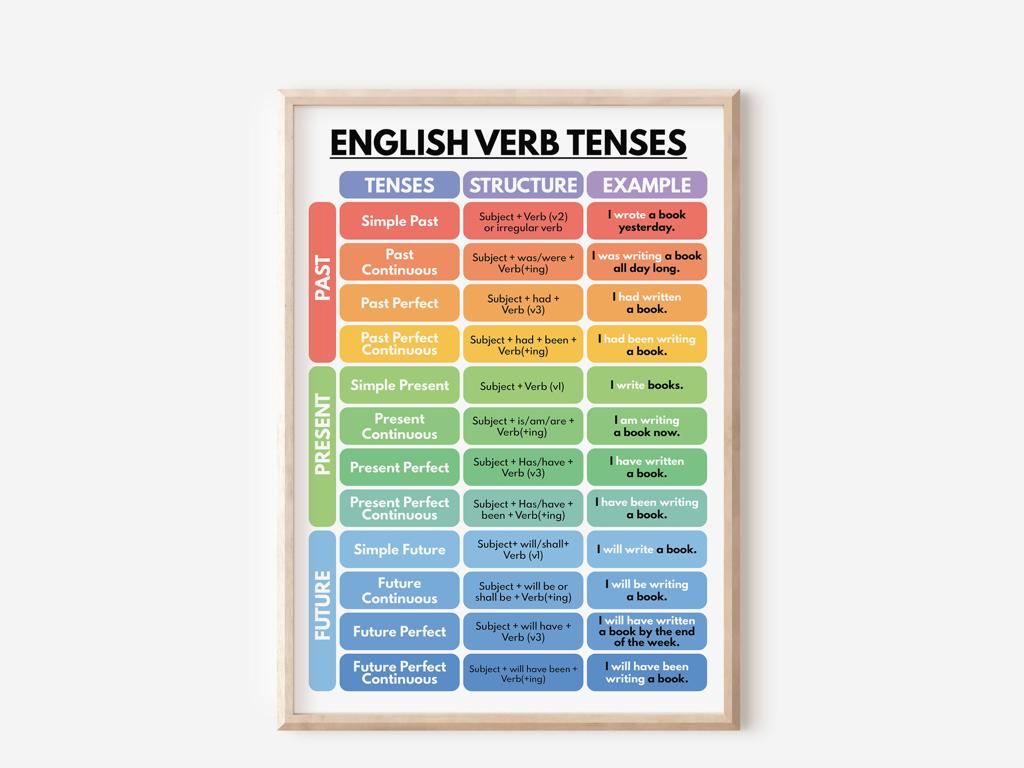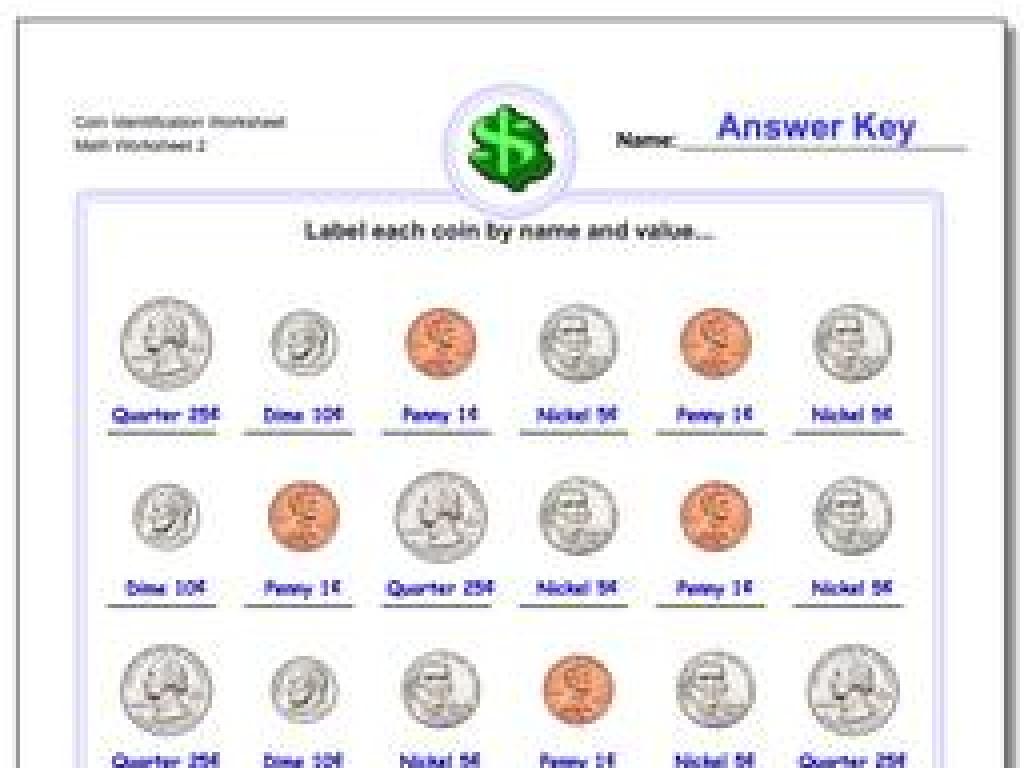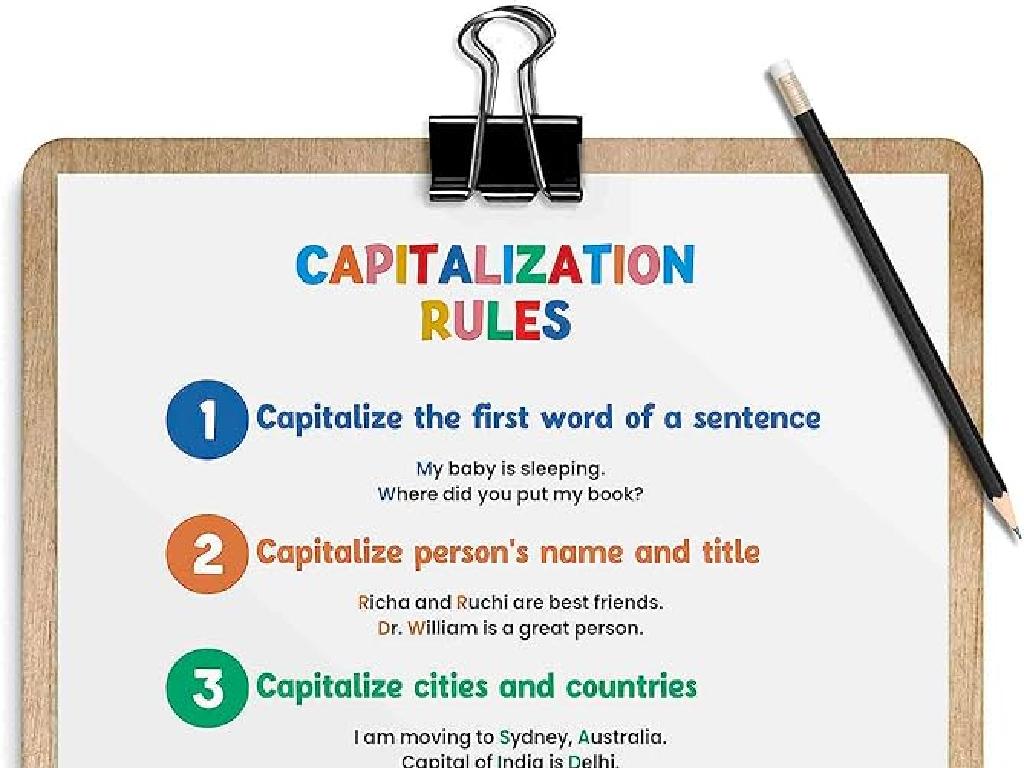Add Two Numbers Up To Three Digits: With Regrouping
Subject: Math
Grade: Third grade
Topic: Addition: Three Digits
Please LOG IN to download the presentation. Access is available to registered users only.
View More Content
Welcome to Addition: Mastering Regrouping
– Becoming addition experts today
– Adding large numbers is fun
– Think of adding numbers like stacking different blocks together.
– Building blocks method
– Just like stacking blocks, we add numbers in each column, one by one.
– Learn the ‘regrouping’ technique
– When a column adds up to 10 or more, we ‘regroup’ by carrying over to the next column.
|
This slide introduces the concept of addition with regrouping to third-grade students. Start by engaging their excitement about becoming ‘addition experts.’ Draw an analogy between adding large numbers and building with blocks, which they are likely familiar with, to make the concept more relatable. Explain that just like they stack blocks carefully, they need to add numbers column by column. Introduce ‘regrouping’ as a special method to simplify adding numbers that sum to 10 or more in one column, and how we carry over to the next column. This sets the foundation for the next slides where the actual method of regrouping will be demonstrated with examples. Encourage students to think of numbers as building blocks to create a strong visual understanding of the concept.
Understanding Regrouping in Addition
– Regrouping: exchanging values
– Like trading 10 ones for 1 ten when we have more than 9 ones in a column
– Regrouping for efficiency
– When to regroup numbers
– If a column’s sum is 10 or more, we regroup to the next column
– Practice regrouping with examples
– Example: Adding 356 + 174, we regroup in the ones and tens places
|
This slide introduces the concept of regrouping, a fundamental skill in addition when dealing with multi-digit numbers. Regrouping is necessary when the sum of a column exceeds 9, as it allows us to carry over the excess to the next column, ensuring that each column only contains a single digit. It’s crucial to provide clear examples, such as adding 356 + 174, where students can see that 6 ones plus 4 ones equals 10 ones, which we then regroup as 1 ten and 0 ones. Similarly, in the tens column, we regroup 5 tens plus 7 tens as 12 tens, which translates to 1 hundred and 2 tens. Practice problems should be provided for students to apply this concept with guidance.
Adding Numbers Without Regrouping
– Start with an easy example: 123 + 156
– This is straightforward addition with no carrying over
– Add numbers column by column
– Add units, then tens, then hundreds
– Begin addition from the right
– Always start adding from the units column
– Ensure each column sums to less than 10
– If a column adds up to 10 or more, that’s regrouping
|
This slide introduces students to the concept of adding multi-digit numbers without the need for regrouping. Begin by showing them the example 123 + 156, and demonstrate how to add each column starting from the rightmost side, which is the units column. Emphasize that in this case, each column’s sum does not exceed 9, which means there is no need to carry over to the next column. This is a foundational skill that will help them understand regrouping when sums exceed 9. Have students practice with similar problems where the columns add up to less than 10 to reinforce the concept.
Adding With Regrouping: Step by Step
– Start with 258 + 174
– Add the right column (8+4)
– The sum is 12, which is more than 10
– Regroup if sum exceeds 9
– Place 2 under the right column, carry 1 over
– Carry over to the next column
– Add carried 1 to the middle column (5+7+1)
|
This slide introduces students to the concept of regrouping when adding three-digit numbers. Begin with the example 258 + 174. Explain that when adding the ones column (8+4), the sum is 12, which is more than 9, so we need to regroup. Write the 2 below the ones column and carry the 1 to the tens column. Then add the tens column numbers (5+7) plus the carried over 1, which equals 13. Again, write the 3 below the tens column and carry over the 1 to the hundreds column. Finally, add the hundreds column (2+1+1). The final answer is 432. Encourage students to practice this method with different numbers and ensure they understand the concept of carrying over to the next column whenever they encounter a sum that exceeds 9.
Adding Large Numbers with Regrouping
– Start addition from the rightmost digit
– Identify columns summing to 10 or more
– If a column adds to 10+, we regroup those digits
– Carry over to the next column as needed
– Place the extra digit in the next left column
– Practice example: 359 + 287
– Let’s solve it step by step together
|
This slide is designed to help students practice the concept of regrouping when adding three-digit numbers. Emphasize the importance of starting from the rightmost digit (ones place) and moving left. When the sum of a column is 10 or more, we regroup by carrying over to the next column. For example, when adding 359 + 287, we start with the ones place: 9 + 7 = 16, place the 6 and carry over the 1 to the tens place. Continue this process for all columns. Use the practice example to walk through the steps together as a class, ensuring that students understand the regrouping process. Prepare to answer questions and provide additional examples if needed.
Let’s Practice More: Addition with Regrouping
– Solve 426 + 378 on your own
– Try adding 591 + 163 next
– Finally, add 734 + 219
– Check for regrouping in each problem
– Regroup if a column’s sum is 10 or more
|
This slide is designed as a class activity where students will practice adding three-digit numbers with regrouping. Encourage the students to solve the problems step by step, starting with the ones place, then tens, and finally the hundreds. Remind them to look out for sums that are greater than or equal to 10, which will require them to carry over or ‘regroup’ to the next column. For the teacher: Prepare to walk around the classroom to assist students who might be struggling with the concept of regrouping. Have additional similar problems ready for students who finish early, and consider pairing students to discuss their methods and answers. This activity will help reinforce their understanding of addition with regrouping.
Class Activity: Addition Relay
– Teams solve addition problems
– One column per team member
– Pass to the next after solving
– First team to finish wins!
|
This activity is designed to encourage teamwork and understanding of addition with regrouping. Divide the class into small groups, each group becomes a team. Provide each team with a multi-column addition problem that requires regrouping. Each student is responsible for correctly adding one column before passing the problem to the next teammate. The first team to complete their problem with all columns correctly added wins. Make sure to have multiple problems ready for each team to prevent copying and to provide additional practice. This activity will help reinforce the concept of regrouping in addition and give students the opportunity to collaborate and communicate effectively with their peers.
Conclusion & Homework: Mastering Regrouping
– Excellent work in today’s class!
– Practice is key to regrouping success
– Homework: 10 addition problems
– Use the regrouping skills you’ve learned
– Bring any questions to next class
– We’ll review any challenges together
|
Today’s class focused on adding two numbers up to three digits with regrouping. As we wrap up, it’s important to acknowledge the students’ efforts and remind them that mastering regrouping takes practice. The homework assignment consists of a worksheet with 10 addition problems that require regrouping. This will help reinforce the concepts learned in class. Encourage students to attempt all problems and assure them that we will address any questions or difficulties in the next session. Provide guidance on how to approach each problem and remind them of the steps involved in regrouping. Celebrate their progress and encourage a positive mindset towards challenging problems.






